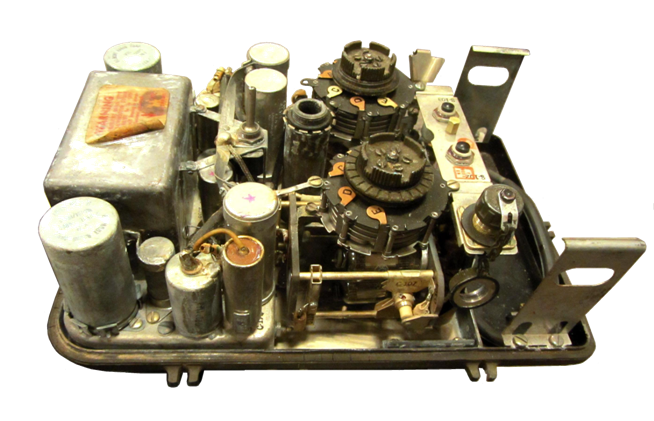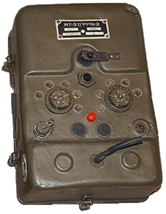







|
WW2 Beacons. |
|
VINTAGE AVIONICS |
|
Instrument homing systems |
|
Eureka ( I found it !) was a range of beacons operating in the 210-240 MHz band. The PPN2 was a very portable beacon, introduced just after D_Day.
The beacon is used in conjunction with aircraft carrying the associated airborne interrogation equipment, like the British Rebecca sets. The airborne equipment radiates (interrogating) pulses of RF energy, which, when received by the beacon, automatically trigger it into operation. The beacon then radiates reply pulses. These reply pulses, when received by the airborne equipment, enable the aircraft personnel to determine the position of the beacon with respect to the plane, and at the same time provide a means of communication between the aircraft personnel and the man on the ground who is operating the beacon. The beacon ordinarily transmits only when receiving interrogating pulses.
There are 5 transmit and 5 receive frequencies. The preset frequencies A-B-C-D-E are 214-219-224-229-234 MHz both for receive and transmit. Send and receive can’t be on the same channel, preferably with 2 or more channels difference like send = A, receive =C. This gives 12 useable combinations. The antenna is a 9.5 feet mast with a simple ground-plane in top. The average range to aircraft at 5000 feet is 50 miles.
The receiver responds to pulses of at least 300 uV at the selected frequency. Each response is a single pulse of 7us width, with at least 8W peak power. Interrogation can be from 5 aircraft simultaneously, each with 100 pulses per second, so the beacon has to respond with up to 500 pulses per second with reduced battery time. The dead time after a response is not sufficient to prevent over-interrogation.
Battery BB-212/U The power source is a single, vented lead-acid cell 2V/38 Ah, sufficient for 6 hours of operation, with none or 1 interrogator. The battery cell vents through an external tube. The battery has 3 colored balls of different specific gravity to show the charged state when the cover is open to help charging. The battery is fully charged when all are floating, 60% when two float, and 30% when only one floats.
The circuit diagram is here. |
|
Bijschrift bij afbeelding. |
RT-37 / PPN2 portable beacon ( aug. 1944) |

